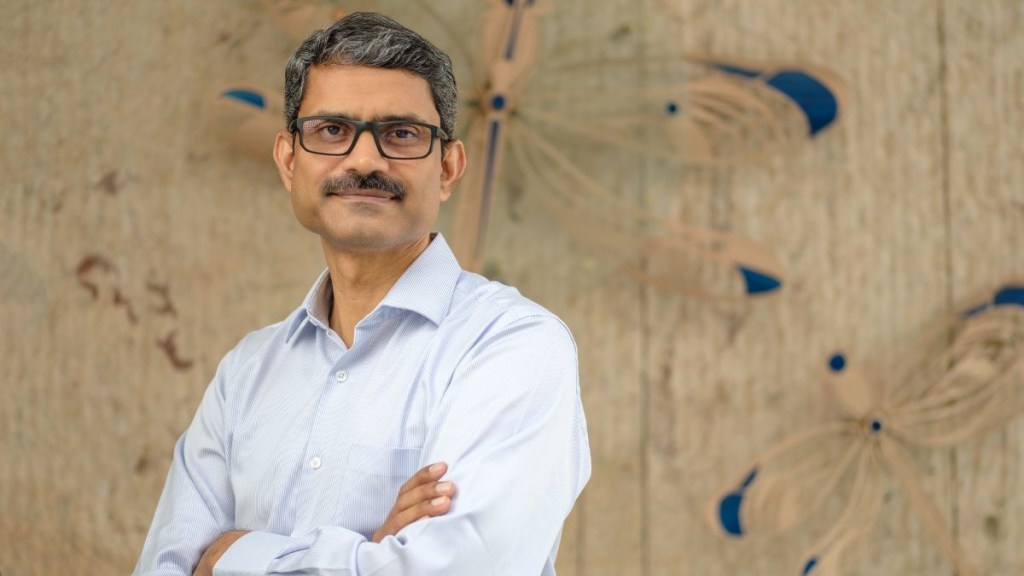Titan Company’s Taneira wants to be a one-stop shop for women’s ethnic wear and become a Rs 1,000-crore brand by 2027. Ambuj Narayan, CEO, Taneira, tells Christina Moniz how the brand is working to attract younger customers to be able to reach that target. Edited excerpts:
Considering women’s ethnic wear is a highly unorganised category, what brand differentiation are you creating for Taneira?
Market research tells us that sarees alone are a Rs 50,000-crore category, growing at around 6% CAGR. The ethnic wear market is even bigger at over Rs 1.4 trillion. Within this, the organised market is growing at a much higher rate of 8-10% CAGR, which is why we’re seeing many brands enter this category now. The branded market for sarees is still much smaller than the unorganised market, so we see plenty of scope for growth. There is a significant shift among consumers from unbranded to branded apparel. In the past, sarees were not a well-branded category and that is why our objective is to redefine the category. We bring over 100 clusters of diverse textiles and craftsmanship under one roof. If we stay true to our proposition and maintain excellence in our garments, we will gain a decent market share in the ethnic wear category.
One of our key priorities as a brand is to empower the artisan and weaver community. So we have 13 weavershalas across India, which provide training in safe and hygienic work spaces. We aim to open 10 such centres every year, since they have helped us attract skilled weavers who had previously given up on their craft because of a dearth of opportunities. These initiatives also give us an edge in this category.
What steps are you taking to keep Taneira’s pricing competitive, especially for customers in smaller markets?
We are constantly working to innovate and keep pricing attractive without compromising on our quality and product proposition. Our range of cotton apparel starts at Rs 1,299 and our pure silks start at around Rs 6,000. We’re experimenting with yarn combinations too, such as silk cottons, which are also priced attractively. All our sarees are handcrafted, which means that they are either woven by hand or they have some work that is done by hand such as embroidery. We are mindful that customers should feel that they are getting their money’s worth when they shop at Taneira.
Our NPS (net promoter score) has stayed consistently around the 90 mark, which is among the best in the industry and a good sign for us. This is something we hope to maintain with our quality and pricing.
The brand aims to hit the Rs 1,000-crore mark by FY27. How close are you to achieving that target?
Our stated ambition to reach the Rs 1,000-crore mark by FY27 still holds and we are cruising along well. Taneira’s expansion plan is geared towards that. Our store footprint is now over 65 but that number keeps changing because we’re opening stores almost every week. We will be launching 35 stores in the new fiscal and we plan to populate the metros and tier-I cities first before moving on to tier-II markets. Currently, we are in about 30 cities and have a stronger presence in metros like Bangalore, NCR, Hyderabad, Kolkata and Mumbai. Our plan is to have 200 stores operational by 2027.
While we are expanding geographically, we are also working on widening our ethnic wear portfolio. We want to be more than just a saree brand, and are expanding our offerings to include ready-to-wear kurtas, lehengas and blouses. The vision is to make Taneira a one-stop shop for women’s ethnic wear.
Typically, demand for ethnic wear soars during the festive and wedding season. How are you keeping the brand relevant all year round?
It is true that around 30-35% of our sales come during Q3, which is usually the Diwali quarter. We also see robust demand even after the festive quarter, because usually the winter wedding season comes right after Diwali. Even in the summer months, there is a good demand for apparel in cotton and organza fabrics. So barring the June and July monsoon months, there is consumer demand all year round. The number of occasions for ethnic wear is also increasing. We do a good deal of influencer-led marketing and have stepped up our presence on social media to keep our consumers, especially the younger ones, engaged all year round.
How big is Taneira’s e-commerce business?
We’re seeing a good consumer response in sales from our own brand website as well as on other e-commerce marketplaces where we are present. When it comes to occasion-led or festive shopping, there is greater traction offline but for casual wear or work wear, customers prefer to shop a lot more online.
Currently, e-commerce accounts for 7-8% of our total sales but it is growing faster than offline sales. The online purchases are driven largely by younger consumers. So while we define the average Taneira consumer as a progressive Indian woman aged between 35 and 40 years, our endeavour is to reach younger women in the 25 to 35 age group because these will be our future customers. We do this through our apparel designs, product differentiation and even our digital marketing campaigns. Our offline store layouts are easy browsing formats. There is a lot of storytelling inside the store, which appeals to younger consumer cohorts.

